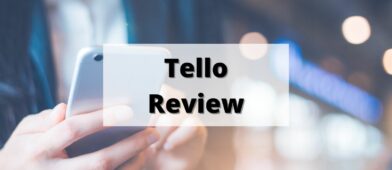Flexible Spending Accounts can be a very important part of your finances but they come with one drawback – use it or lose it. Any money you put into an FSA must be spent by the end of the year, however, some employers allow for a 2.5-month grace period, so you might have until March 15th.
It can be challenging to know how much to put in and sometimes, as we near the end of the year, we find ourselves with a little more than we really needed.
Fortunately, there is a solution. There are a lot of great things you can use your FSA dollars on.
If you’ve got a Flexible Spending Account (FSA), you may be wondering how to use FSA money before the end of the year. Here are several ways to spend your FSA money on qualifying medical expenses you might not know are FSA-eligible.
Table of Contents
- What Is an FSA?
- What Are the Contribution Rules for FSA Money?
- How To Use FSA Money
- 1. Acupuncture
- 2. Gel Inserts
- 3. Prescription Sunglasses
- 4. Chiropractor Visits
- 5. Sleep Aids
- 6. Acne Medicine
- 7. Baby Products
- 8. Family Planning Products
- 9. Certain Dental Costs
- 10. Alcohol, Drugs, and Tobacco Cessation Products and Programs
- 11. Vacation Supplies
- 12. Service Animals
- 13. Insurance Premiums
- Final Thoughts on Spending FSA Funds
What Is an FSA?
A Flexible Spending Account (FSA) works together with your employer’s health insurance plan. You contribute to the account via pre-tax payroll deductions and you can use the FSA money to cover qualified medical expenses.
When you have eligible expenses you’ll pay for the medical care, or item, with your own funds and then you’ll submit receipts for an FSA reimbursement. The money will then be withdrawn from your FSA, tax-free, and deposited back into your checking account. Keep in mind that it can only cover “out-of-pocket expenses”, so if you are being reimbursed from another source, say your health insurance, then it won’t qualify for FSA reimbursement.
Much like Health Savings Accounts (HSA), both you and your employer can contribute to an FSA account, although the annual maximum contribution of an FSA ($3,850, in 2023) is lower than that of an HSA. Employers can also contribute up to $500, in addition to matching the employee contribution.
Unlike an HSA, if you don’t use the money in your FSA by the end of the year you will forfeit the funds. And the real kick in the teeth — your employer gets to keep the money.
What Are the Contribution Rules for FSA Money?
FSAs, along with HSAs, are powerful, money-saving options for helping reduce your tax burden.
However, the two plans operate differently. Check out this article on HSAs to learn more about how HSAs work.
In this article, however, we’re focusing on FSAs. As of 2023, the contribution limits for FSAs are as follows:
- $3,850 for single participants
- $7,750 for married participants
For 2024, the limits will be $4,150 for individuals and $8,300 for families.
FSA Carryover Rules
Note that your employer does have the option to include a carryover provision for the company’s FSA plan. That carryover amount can be up to $610.
So, for example, you could carry over $610 in 2023 (provided your employer has set the plan provisions for that amount) and still contribute the maximum allowable in 2024.
If you have money from your FSA left over at the end of the year, you may want to consider spending it on these little-known eligible expenses.
How To Use FSA Money
First and foremost, your FSA money can be used to reimburse you for eligible health care expenses that you paid for out-of-pocket. For example, doctor visits, dental care, and even over-the-counter medication.
So, look back through your calendar for any medical appointments. If you paid a co-pay see if you can get a receipt from the doctor’s office (if you’ve lost it) so you can submit it for reimbursement.
Also, think about any medications you’ve taken. Prescriptions are qualified expenses, but so are things like prenatal vitamins, birth control pills, and allergy medications.
If you’ve covered all of your mainstream medical expenses and still have money left over in your FSA, here are some products and services you could purchase with your FSA funds.
1. Acupuncture
According to the Mayo Clinic, acupuncture is a traditional Chinese medical treatment used to relieve pain, reduce stress, and enhance overall body wellness.
Acupuncture practitioners insert extremely thin needles on specified meridians (energy pathways) in your body to bring it into balance.
Be sure to use a licensed acupuncturist (or at the very least, a certified acupuncturist) for treatment.
2. Gel Inserts
Are you on your feet all day? Do you need or want added support in your shoes? You can pay for gel inserts with your FSA funds.
Putting quality gel inserts in your shoes can be an excellent way to make walking and standing much more bearable.
Be sure to keep your receipts for this and all other FSA expenses in case you get audited.
3. Prescription Sunglasses
If you need corrective lenses to help your eyesight, prescription sunglasses are very nice to have. However, they are also expensive. Use your FSA money, visit your optometrist, and order some prescription eyeglasses that can help make being out in the sun even more fun.
Contact lenses are also
4. Chiropractor Visits
Many people have had success in relieving back pain and other health issues with the help of a licensed chiropractor. Unfortunately, chiropractors don’t take insurance or are considered out-of-network on insurance plans. Thankfully, your FSA funds can be used to cover expenses incurred by chiropractic care.
5. Sleep Aids
If you have trouble sleeping at night, FSA funds can cover sleep aid medicines. For the expenses to be eligible, however, you have to have a prescription from your doctor. That said, many doctors will write prescriptions for sleep aids when needed, even if they are over-the-counter or natural sleep aids.
6. Acne Medicine
Acne medicine is another expense that you can pay for out of your FSA funds. If you or a dependent are struggling with acne, talk with your doctor about prescribing medicines to help.
There is a wide variety of medicines that can be used to treat acne, including amoxicillin. Visit your doctor for details.
7. Baby Products
Do you have, or are you expecting to have, a baby? If so, note that certain baby products can be purchased using FSA funds.
Those products include (but are not necessarily limited to) breast pumps and other supplies to assist with lactation, baby monitors, baby sunscreen, and potty-training underwear.
You can also purchase oral medication dispensers, baby thermometers, and baby pain reliever medications with FSA funds.
8. Family Planning Products
Along with covering your baby products after your child is born, some family planning products can be covered with FSA funds as well.
Family planning products that are eligible for payment with FSA funds include pregnancy tests, vasectomies, infertility treatments such as in-vitro fertilization, and treatments such as reverse vasectomies and reverse tubal ligations.
Even feminine hygiene products are covered. If you didn’t keep your receipts from this year, maybe now is the time to stock up for next year, and keep those receipts going forward.
9. Certain Dental Costs
You can pay some dental costs for using your leftover funds too. Qualifying dental expenses include:
- Teeth cleaning
- Fluoride treatments
- Tooth sealants
- Cavity fillings
- Braces
- Dentures
- Tooth extractions
See the government’s FSA website page for more information on what dental and other expenses can be covered using your FSA funds.
10. Alcohol, Drugs, and Tobacco Cessation Products and Programs
You can also use your FSA to cover expenses for programs designed to help you overcome substance addictions.
For example, you can use the money to pay for alcoholism treatment facility services, including meals for in-patient stays.
Substance abuse programs and smoking cessation programs are covered, although you can’t usually use the money for nicotine patches or nicotine gum unless your doctor prescribes them.
11. Vacation Supplies
Some vacation supplies can be covered with FSA funds as well. These might include sunscreen and motion sickness medicine when prescribed by your doctor. You can also claim compression socks for long air flights and travel-sized medicines as well. Talk to your doctor for details.
12. Service Animals
If you have or need a service animal for a physical disability, you can pay for the cost of the service animal and all expenses such as:
- Food
- Grooming costs
- Veterinary care
- Other expenses vital to the animal doing its job
Note that this includes service animals for emotional disabilities such as depression. However, your doctor will need to write a Letter of Medical Necessity to confirm the need for a service animal.
And note as well that “service animal” is a different designation than “therapy animal.” Therapy pets are not considered FSA-eligible expenses.
13. Insurance Premiums
And last but not least, you can pay for insurance premiums that you pay out-of-pocket for medical care coverage. You can’t, however, deduct the portion of your insurance premiums paid for by your employer.
Final Thoughts on Spending FSA Funds
Contributing to an FSA is just one of many ways to save money. You can fund the account pre-tax and then spend that tax-free money on things you would have bought anyway. If you are diligent about keeping your receipts it’s pretty easy to come up with enough medical costs to use up your FSA balance.
If you get your balance under $610, feel free to roll over your unused funds to the following year’s balance if you have the option to do so.




Leave a Comment: